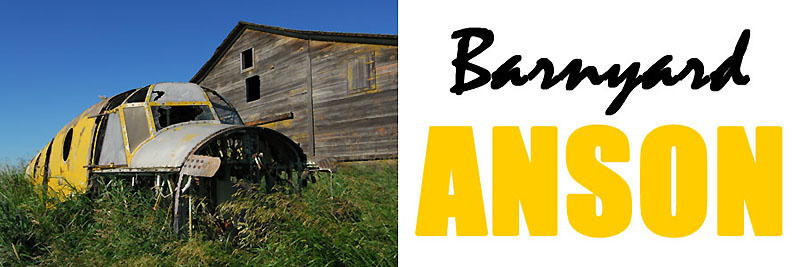
Cayly, AB, Canada - June 2008

We've all heard stories about people finding airplanes stored away in someone's barn, but across the Canadian praries, its still possible to find Second World War-vintage
aircraft laying out in the open on people's farms. (Trevor McTavish)

Between 1940 and 1954, the Royal Canadian Air Force operated 4,413 Avro Ansons; mostly British-built Mk.Is, and Canadian-built Mk.IIs and Mk.Vs. While the Mk.II was basically
a Canadianized Mk.I, the Mk.V was redesigned with bigger Pratt & Whitney engines and a molded plywood fuselage that helped keep out the cold winter drafts that plagued its
predecessors. (Trevor McTavish)

70 years after she last flew, the fuselage on this Anson is peeling apart to show torn fabric and rotting wood. It has a beautifully artistic, yet sad appearance. (Trevor
McTavish)

Once the structural backbone of the airplane, the thick wooden wing spars are now only good as homes for insects hiding in the grass. (Trevor McTavish)

The fuselage of the Mk.V Anson was assembled from five pre-fabricated sub-assemblies, bolted together along their reinforced edges. As beautiful as the colours are, there's
no strength left here. (Trevor McTavish)

Even more bolts wouldn't help hold this joint together today.(Trevor McTavish)

Peeled fabric and weather beaten wood, it gives me the impression of islands surrounded by a golden yellow ocean. (Trevor McTavish)

Inside the fuselage the grass has grown to chest height, the cabin floor and lower fuselage having rotted away long ago. There's no control yoke or instruments, but there is
a seat. (Trevor McTavish)

Maybe someone has passed a few hours imagining themselves on some daring bombing mission over Germany, or crop dusting the fields of canola on the horizon. Maybe, just maybe,
this forgotten warrior has still managed to inspire someone to take to the skies. (Trevor McTavish)

I've always liked the smooth lines of the Mk.V Anson, yet this is the only one I've actually touched "in the flesh" as they say. Her fragile wooden construction and 70 years
of exposure to Canada's harsh weather and have made the Ansons all but extinct. (Scott McTavish)